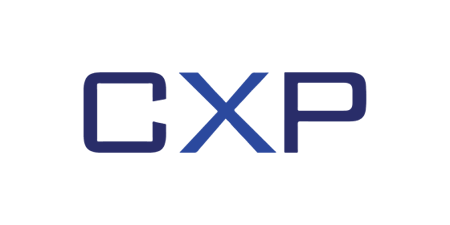
Client:CXP
Contact Center
Region:Europe
Industry:High Tech
Contact Center
Revolutionizing customer experience with software robots

158,400
tasks automated
35%
avg. reduction in customer calls
13,200
hours handed back to staff
52%
avg. increase in Trust Pilot ratings
18%
increase in data accuracy
Client Overview
CXP provides outsourced contact centers for some of the United Kingdom’s (UK) biggest brands. Based in Glasgow, it has offices across the UK and in South Africa. It employs nearly 1,000 people and has a focus on retaining highly skilled agents who have access to the latest automation technology to delight customers.
Excellent customer experience and personalization are the hallmarks of a successful business. This is especially the case in markets such as utilities, financial services and telecoms where the ability of a brand to serve people well is a key differentiator. CXP, the contact center outsourcing specialist, has embraced automation to help its clients achieve this—even anticipating customer needs before they call.
Offering a truly personalized service and predicting customer needs is what people expect from brands today. In fact, almost 70 percent of consumers want companies to personalize their communications. Those that do will be the ones that thrive. Furthermore, in sectors where there’s little to differentiate between providers on price or product, customer experience and personalization are perhaps the only areas where a firm can really steal a march on its competitors.
This is why utility providers, retailers, telecoms firms and the public sector partner with CXP to gain a competitive edge when it comes to pleasing customers through end-to-end customer management. “Our clients choose to outsource with us because we can specialize and invest in the people and technology to offer the very best experiences,” says Stephen Coia, CXP’s Commercial Director.
Increasingly, automation is at the heart of this. “The challenge for all contact centers is that agents need to have data at their fingertips to deal with enquiries,” continues Coia. “Yet that information is often spread around lots of different legacy systems that can be hard to navigate.”
This means that when a customer calls a contact center, they often find themselves having to repeat information, wait for agents to find data, or are even put on hold. However, with automation, software robots—often combined with Artificial Intelligence (AI) and machine learning—can be created to undertake the legwork, presenting data to agents quickly so staff can deal with calls efficiently.
How it works
“Let’s take the example of an energy company,” Coia explains. “A customer might call about a bill. More often than not, they’re doing so because they’re not happy. Perhaps the bill seems too high. To deal with this, the agent is starting from a negative position. They then have to go through specific steps to deal with it.”
There will be data to capture, such as the customer’s name and contact details. They will need to open systems to get information, clarify the situation, and explain the bill. “This can take 10-14 minutes on average,” says Coia. “You need to rely on the expertise of the agent to navigate their way through the call.
If automation is introduced to the situation, it can cut the time taken significantly thanks to a software robot getting and presenting the data in the blink of an eye.“We’ve managed to cut 10-minute interactions like this to six minutes,” Coia adds. “The result is that customers can resolve their query quickly and our clients benefit from efficiencies.”
We’ve managed to cut 10-minute interactions to six minutes. The result is that customers can resolve their query quickly and our clients benefit from efficiencies.
Stephen Coia • Commercial Director, CXP
A measurable difference
However, Coia's keen to make it clear that reducing call times is not the key factor. The most important outcome is increased customer service ratings, as measured by industry benchmarks like the UK’s Trust Pilot score. “For one client, their Trust Pilot score went from 2.8 out of five to 4.1,” he points out.
This is because automation not only shortens a call but also personalizes the whole experience. “Customers aren’t bombarded with questions and aren’t left waiting. The agent is empowered in advance of a call coming in, with robots recognizing the number calling and linking that to the customer and their history. The agent can then focus on solving a problem and making it an enjoyable experience—or even cross-selling.”
However, automation can do a great deal more—and CXP plans to exploit all it can do. “Phase one of our automation journey has been about using attended robots to provide data to agents. Phase two will be to use unattended robots to collect the same data and present it to customers via chatbots. The benefit of this is they can self-serve via an automated phone call, chat or even WhatsApp message.”
Coia also believes there is a potential third phase where automation can start to anticipate what customers might want, or which people are likely to call in. In this way, automation isn’t just about speeding up transactions or resolving issues quickly. It’s about pre-empting them before they arise or even spotting when might be a good time to make an offer and personalize the type of interaction a customer has.
The journey
You’d be forgiven for thinking CXP had been using automation for years given the way it’s now integral to the business. But the firm only began its journey about a year ago. “We looked at all the vendors and chose UiPath because it has a strong focus on contact centers and its vision aligned with ours. No one came close,” Coia recalls.
"We then worked with a partner called VKY Intelligent Automation to help us understand our processes and build the robots we needed to support our staff.” The firm did this having recognized it didn’t have the bandwidth within its IT team and development staff to take on automation. “Working with a partner means we can focus on our core activity and VKY can act as the automation center of excellence.”
However, this doesn’t mean automation is imposed on staff. Quite the opposite. “Our teams have been excited about the robots from day one. Colleagues could see they would make their jobs easier, more rewarding, and help them perform better. They’ve been coming to us and suggesting processes where robots could be used.”
Coia is keen to point out that the implementation of automation has been done with the agents, not to them. In total CXP now has 14 robots undertaking 158,400 tasks, handing back 13,200 hours to staff, increasing accuracy by 18%, and boosting Trust Pilot scores for clients by 52% on average.
In the next 12 months, CXP plans to push ahead further with the second phase of its automation plan, creating more unattended robots to improve the ability for customers to self-serve. It will also work to anticipate issues. “Instead of waiting for a customer to call about a troublesome bill, we’ll solve the problem and contact them to explain,” Coia confides.
When asked what advice he’d give to others beginning their automation journey, Coia says, “Show off your technical capabilities and partners to clients from day one. Don’t hide your expertise away. Be proud of your innovation. Also, be aware of the limitations you might have internally. Automation is new to many people so don’t be afraid to call for external help and get experts in to support.”
Summing up, Coia goes back to the fact that while efficiencies and time savings are great—and save clients resources—the real benefit of automation is the fact that it improves customer experience and personalization while also allowing staff to achieve more and become proactive.
And this is vitally important. Because bad experiences have a negative and wide reaching impact on businesses. Positive ones can make all the difference.
The agent is empowered in advance of a call coming in, with robots recognizing the number calling and linking that to the customer and their history.The agent can then focus on solving a problem and making it an enjoyable experience—or even cross-selling.
Stephen Coia • Commercial Director, CXP
Related case studies
Ready for your own case study?
Speak to our team of knowledgeable experts and learn how you can benefit from agentic automation.




